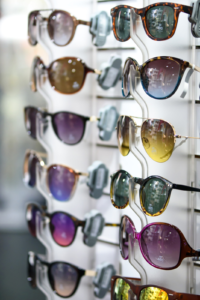Sunglasses are more than just a fashion statement – they’re an essential tool for protecting your eyes from the sun’s harmful UV rays. Whether you’re spending time outdoors, driving, or working on the computer, wearing sunglasses is important for maintaining the health of your eyes. In this article, we’ll take a deep dive into everything you need to know about sunglasses, including the pros and cons of polarized lenses, transition lenses, and other important factors to consider when buying sunglasses.
Polarized Lenses

Polarized lenses are a popular choice for sunglasses, as they reduce glare from the sun and other reflective surfaces, such as water and snow. This makes them an excellent choice for outdoor activities, such as fishing, boating, and skiing. However, there are a few downsides to polarized lenses. For example, they can make it more difficult to see electronic screens, such as GPS devices, and they can be more expensive than other types of lenses.
Transition Lenses
Transition lenses are another popular choice for sunglasses, as they automatically adjust to the amount of light in your environment, becoming darker in bright sun and lighter in low light. This makes them convenient and versatile, as you don’t have to constantly switch between sunglasses and regular glasses. However, transition lenses can be more expensive than regular lenses, and they may not work as well in extreme temperatures.

UV Protection
One of the most important factors to consider when buying sunglasses is UV protection. UV rays can cause serious damage to your eyes over time, leading to cataracts, macular degeneration, and other vision problems. Make sure that your sunglasses provide 100% UV protection, and that they block both UVA and UVB rays.
Lens Color

The color of your sunglasses’ lenses can also have an impact on your vision. For example, gray lenses are a good choice for general use, as they don’t distort colors. However, if you’re spending time in bright sun, consider lenses with a brown or green tint, as these can help to reduce glare and improve contrast.
Frame Material
The material of your sunglasses’ frame can also have an impact on comfort and durability. For example, metal frames are lightweight and durable, but can be expensive. Plastic frames are more affordable, but may not be as durable. Consider your needs and budget when choosing a frame material for your sunglasses.
In conclusion, there are many factors to consider when buying sunglasses, including polarized lenses, transition lenses, UV protection, lens color, and frame material. Take your time, do your research, and consider your specific needs when choosing sunglasses to ensure that you find a pair that provides the best protection and comfort for your eyes.